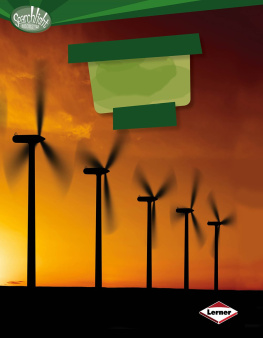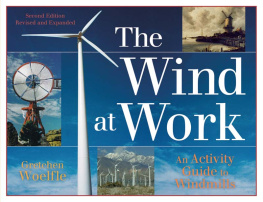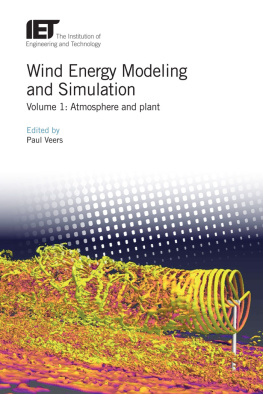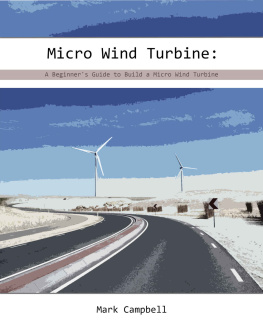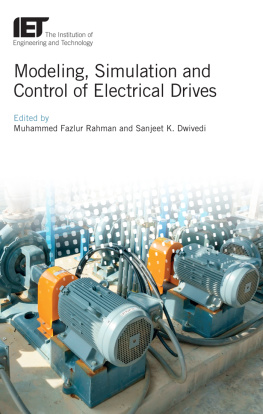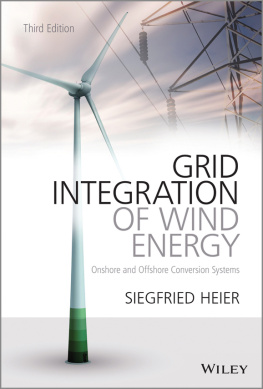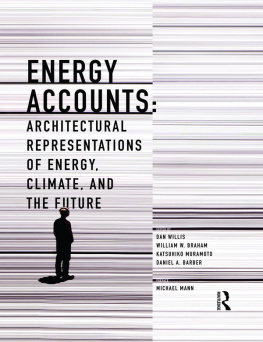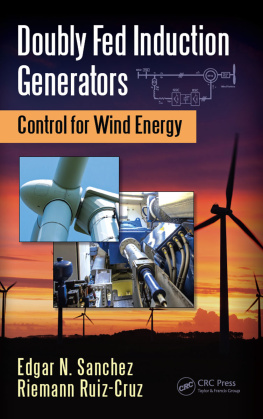Elbakheit Abdel Rahman - Systematic Architectural Design for Optimal Wind Energy Generation
Here you can read online Elbakheit Abdel Rahman - Systematic Architectural Design for Optimal Wind Energy Generation full text of the book (entire story) in english for free. Download pdf and epub, get meaning, cover and reviews about this ebook. year: 2021, publisher: Bentham Science Publishers, genre: Romance novel. Description of the work, (preface) as well as reviews are available. Best literature library LitArk.com created for fans of good reading and offers a wide selection of genres:
Romance novel
Science fiction
Adventure
Detective
Science
History
Home and family
Prose
Art
Politics
Computer
Non-fiction
Religion
Business
Children
Humor
Choose a favorite category and find really read worthwhile books. Enjoy immersion in the world of imagination, feel the emotions of the characters or learn something new for yourself, make an fascinating discovery.
- Book:Systematic Architectural Design for Optimal Wind Energy Generation
- Author:
- Publisher:Bentham Science Publishers
- Genre:
- Year:2021
- Rating:3 / 5
- Favourites:Add to favourites
- Your mark:
- 60
- 1
- 2
- 3
- 4
- 5
Systematic Architectural Design for Optimal Wind Energy Generation: summary, description and annotation
We offer to read an annotation, description, summary or preface (depends on what the author of the book "Systematic Architectural Design for Optimal Wind Energy Generation" wrote himself). If you haven't found the necessary information about the book — write in the comments, we will try to find it.
Systematic Architectural Design for Optimal Wind Energy Generation — read online for free the complete book (whole text) full work
Below is the text of the book, divided by pages. System saving the place of the last page read, allows you to conveniently read the book "Systematic Architectural Design for Optimal Wind Energy Generation" online for free, without having to search again every time where you left off. Put a bookmark, and you can go to the page where you finished reading at any time.
Font size:
Interval:
Bookmark:
Abdel Rahman Elbakheit
In this chapter, the influences of wind on architecture are highlighted. Wind can have both positive and negative effects on architecture. Moreover, architecture can respond in proactive ways to maximise the benefits of wind forces and reduce or eliminate the negative impacts. This chapter sheds further light on notable architectural ideas translated into architectural case studies on harvesting wind energy in the built environment. Moreover, this chapter enables gaining insight into successful practices in architectural design solutions and ways and means to further enhance the performance of the buildings. In addition, the negative impacts of high wind velocities are identified, and possible solutions to mitigate them at their source are presented and discussed. Optimised architectural forms that can completely avoid excessive wind forces and devastating vortex shedding during the design stage are presented.
Mankind encountered wind and its effects from the dawn of existence. The history of using this renewable energy source has been well integrated in human civilisation, being implemented for sailing boats and operating wind mills [] were ground breaking, wherein he proposed the integration of a flower-shaped structure with at Tall
building concentracting and accelerating wind flow for energy harvesting.Another wind energy harvesting design was developed by the European funded project of WEB JOR3-CT98-0270 [September 1998August 2000] [) shows this prototype, which was designed under the collaborative efforts of Imperial College London, Mecal applied mechanics (i.e., consulting firm), University of Stuttgart, and BDSP partnership Ltd. (i.e., engineering consulting firm). This project highlighted that this architectural design enabled increasing wind energy generation by a factor of at least 25% compared with the annual yield of the same turbines under a standalone scenario.
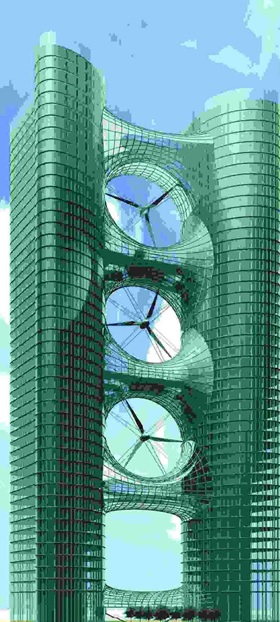
Conceptual architectural design of kidney-shaped twin towers with three horizontal-axis wind turbines integrated, having diameters of 35 m and generating 250 kW of power [].
Derek Tayler of Altechnica [] invented the Aeolian roof that contained a pitched roof with a flat wing at the ridge, which accelerated wind in this area. Wind turbines were then proposed to be used to harvest energy from this accelerated wind.
In 2005, a report was published from the joint venture of the Carbon Trust UK and some consulting and research bodies such as Imperial College London and Altechnica. It detailed the potential of building-integrated wind turbines.
Recently, some projects involving architectural forms incorporating wind turbines have been completed around the globe, such as the Bahrain World Trade Center (BWTC) in Manama, Bahrain, Strata SE1 in London, UK, and Pearl River Tower in Guangzhou, China.
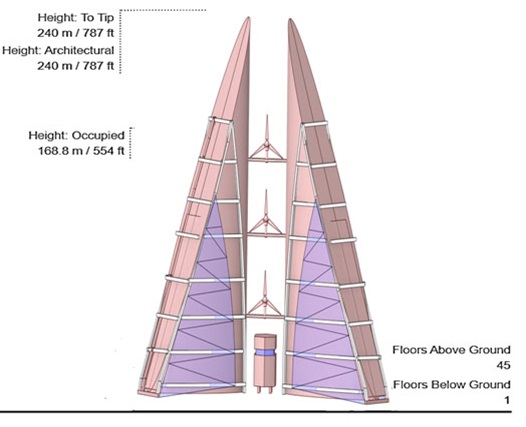
Schematic of the Bahrain World Trade Center, Gulf view.
The BWTC is a manifestation of architectural form finding with wind energy integration (Figs. ] cleverly integrates the natural wind flow patterns of the wind exchange between the Arabian Gulf and land shore in what is scientifically known as the sealand breeze phenomenon. The BWTCs main axis is parallel to the gulf coast; thus, it faces the natural wind passage from land and sea at all times.
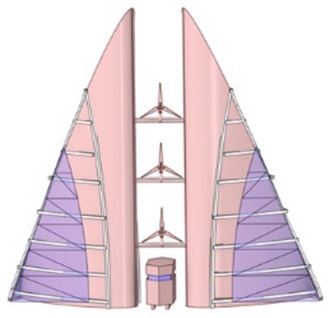
Schematic of the Bahrain World Trade Centre, land view.
The elliptical form of the BWTC layout assists the wind flow in finding its way between the twin towers, further accelerating the flow.
As the twin towers taper skywards, the three-dimensional (3D) aerofoil sections gradually reduce in size, thus providing more stability to the architectural form and securing it from vortex shedding, which is discussed further in section 3.1. This effect (i.e., stability from vertex shedding) reinforced with the accelerating onshore wind velocity between the towers and upwards, produces a pattern of wind velocity that is harvested by the three wind turbines.
The three turbines weigh 11 tons each, have a 29-m-diameter rotor and are supported on a 70-tons 31.5-m length bridge each. Annually, each turbine generates about 225 kW of power.
However sound, logical and well-grounded the scientific bases of these ideas may appear to be, this design necessitated large initial investments, and in the long run, maintenance could be an issue. In addition, there are other disadvantages such as loud noise and heavy vibrations. Furthermore, from the comments of the observers at the BWTC site, these turbines very rarely rotate. The actual reason for this is unclear. It could be either due to inadequate operations management or due to the wind velocities being much lower than anticipated. No comprehensive study on these turbines energy outcome is present at this moment.
Strata SE1 [).
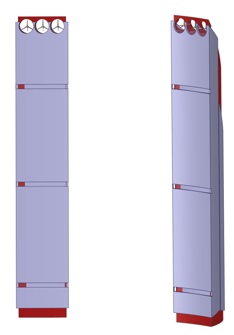
Schematic of the main faade facing the prevailing wind direction of the Strata SE1.
Fig. () shows the schematic views of Strata SE1s main faade facing the prevailing wind direction. The turbines energy feeds the common areas of the tower and the other landlord-controlled areas.
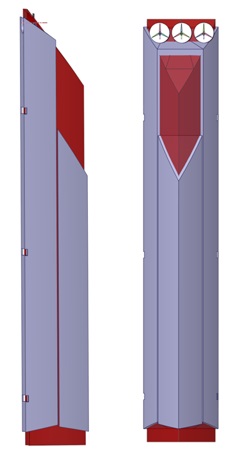
Schematic of the faade of the leeward side of the Strata SE1.
Strata SE1 has 3-circular openings (Figs. ) each with a diameter of 9 m and contains three five-bladed turbines, each turbine producing 19 kW of power, which totals to about 50 MWh annual energy generation. This constitutes nearly 8% of the buildings totally energy demand, which is approximately the consumption of 30 two-bedroom apartments, which are designed to 2006 UKs building regulations.
As for the BWTC, there is no sufficient follow-up study evaluating the turbines performance or energy production for Strata SE1 in the literature.
Although these design ideas can be considered innovative, in practical terms, there are many limitations as to the need for the huge investments required to construct multiple towers as in the case of the BWTC, unless there are sound developmental, social or economic returns. Otherwise, additional solutions are required in terms of safety, which possibly result from the high wind velocities, noise, etc. However, when integrating wind energy harvesting systems with architecture, small-scale technologies that are capable of harvesting wind by utilising the wind flow around buildings, shortfalls of large plants or turbines can be avoided. The shortfalls of large plants have been the major obstacles faced during the proliferation of such projects due to their negative environmental impacts, such as noise and interference with natural light and artificial transmission of TV and radio broadcasting []. Moreover, the capital costs and the additional maintenance costs of the sophisticated machinery makes these designs less favourable. In contrast,
Font size:
Interval:
Bookmark:
Similar books «Systematic Architectural Design for Optimal Wind Energy Generation»
Look at similar books to Systematic Architectural Design for Optimal Wind Energy Generation. We have selected literature similar in name and meaning in the hope of providing readers with more options to find new, interesting, not yet read works.
Discussion, reviews of the book Systematic Architectural Design for Optimal Wind Energy Generation and just readers' own opinions. Leave your comments, write what you think about the work, its meaning or the main characters. Specify what exactly you liked and what you didn't like, and why you think so.


